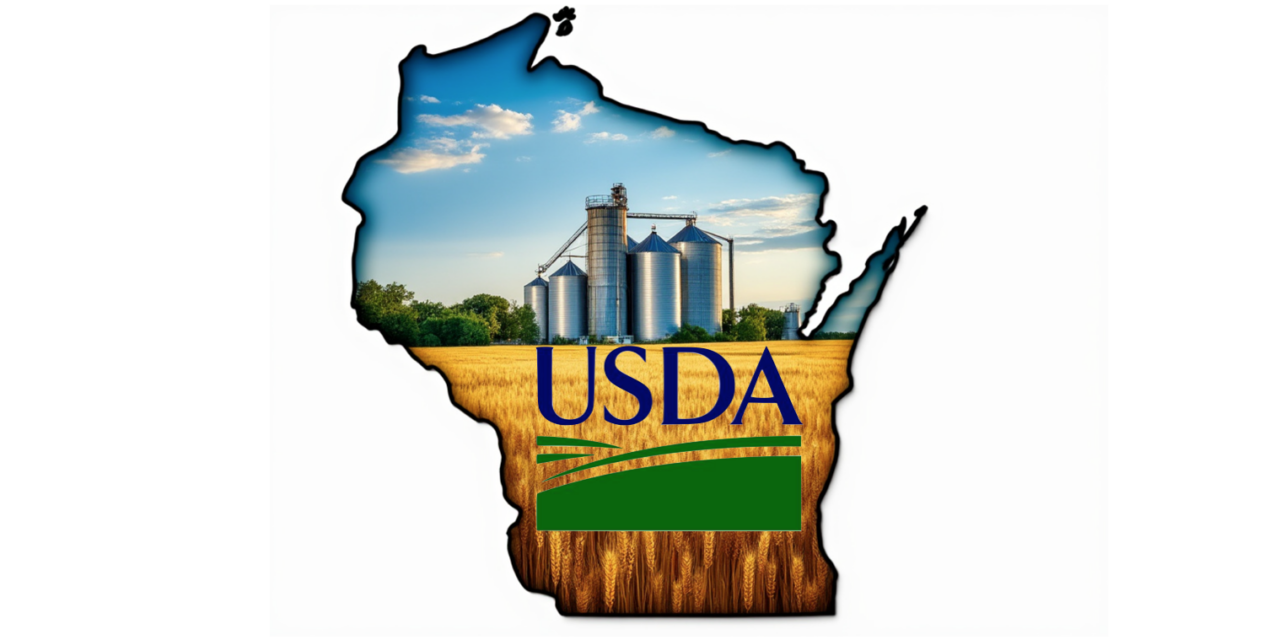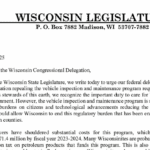Wisconsin farmers had 4.8 days suitable for fieldwork in the week ending Aug. 17, 2025, according to a Monday report from the USDA’s National Agricultural Statistics Service. Favorable growing conditions supported crop development, though some producers faced difficulties accessing fields to harvest hay at peak nutritional value.
Topsoil moisture levels were 8% short, 79% adequate, and 13% surplus, while subsoil moisture stood at 8% short, 81% adequate, and 11% surplus. Recent weather, including scattered showers and warm temperatures, contributed to these conditions, with forecasts indicating mild weather continuing through late August, per the National Weather Service.
Corn silking reached 95% completion statewide. Fifty-four percent of corn hit the dough stage, trailing last year by one day and the five-year average by two days. Fifteen percent of corn was dented. Corn condition improved slightly, with 82% rated good to excellent, up one percentage point from the prior week.
Soybeans progressed, with 93% blooming and 81% setting pods, matching last year’s pace and slightly ahead of the five-year average by one day. Soybean condition also rose, with 82% rated good to excellent, up one percentage point.
Winter wheat harvest neared completion at 94%, while oat harvest reached 72%, one day behind last year but three days ahead of the average. Potato harvest advanced to 26% complete.
Alfalfa hay harvest continued, with the third cutting at 82%, one day ahead of last year and two days ahead of the average. The fourth cutting reached 18% completion. Hay condition climbed to 81% good to excellent, up one percentage point. Pasture and range conditions dipped slightly to 70% good to excellent, down one percentage point from last week.
Recent dry spells in parts of Wisconsin, particularly in the northwest, have raised concerns about moisture stress. However, forecasts for light rain in the coming days may ease these pressures, supporting continued crop development.
Flooding Concerns in Southeast Wisconsin
Recent historic flooding in southeast Wisconsin, particularly from Aug. 9-10, 2025, primarily impacted urban areas with some areas receiving up to 14.5 inches of rain. Flooded streets, basements, and infrastructure were reported, with states of emergency declared in Milwaukee and Waukesha counties.
The USDA report does not indicate widespread flooding directly affecting agricultural fields in southeast Wisconsin for the week ending Aug. 17. Instead, surplus topsoil and subsoil moisture (13% and 11%, respectively) suggest some localized wet conditions but not catastrophic flooding in rural crop areas. River flood warnings persisted in urban areas like Milwaukee and Waukesha counties through mid-August, affecting rivers like the Fox and Menomonee, but these were concentrated in urban and low-lying areas rather than widespread farmland.
Forecasts indicate a mostly dry week ahead, reducing immediate flood risks for agricultural regions, though saturated soils in urban areas remain a concern for flash flooding with any additional rain.












